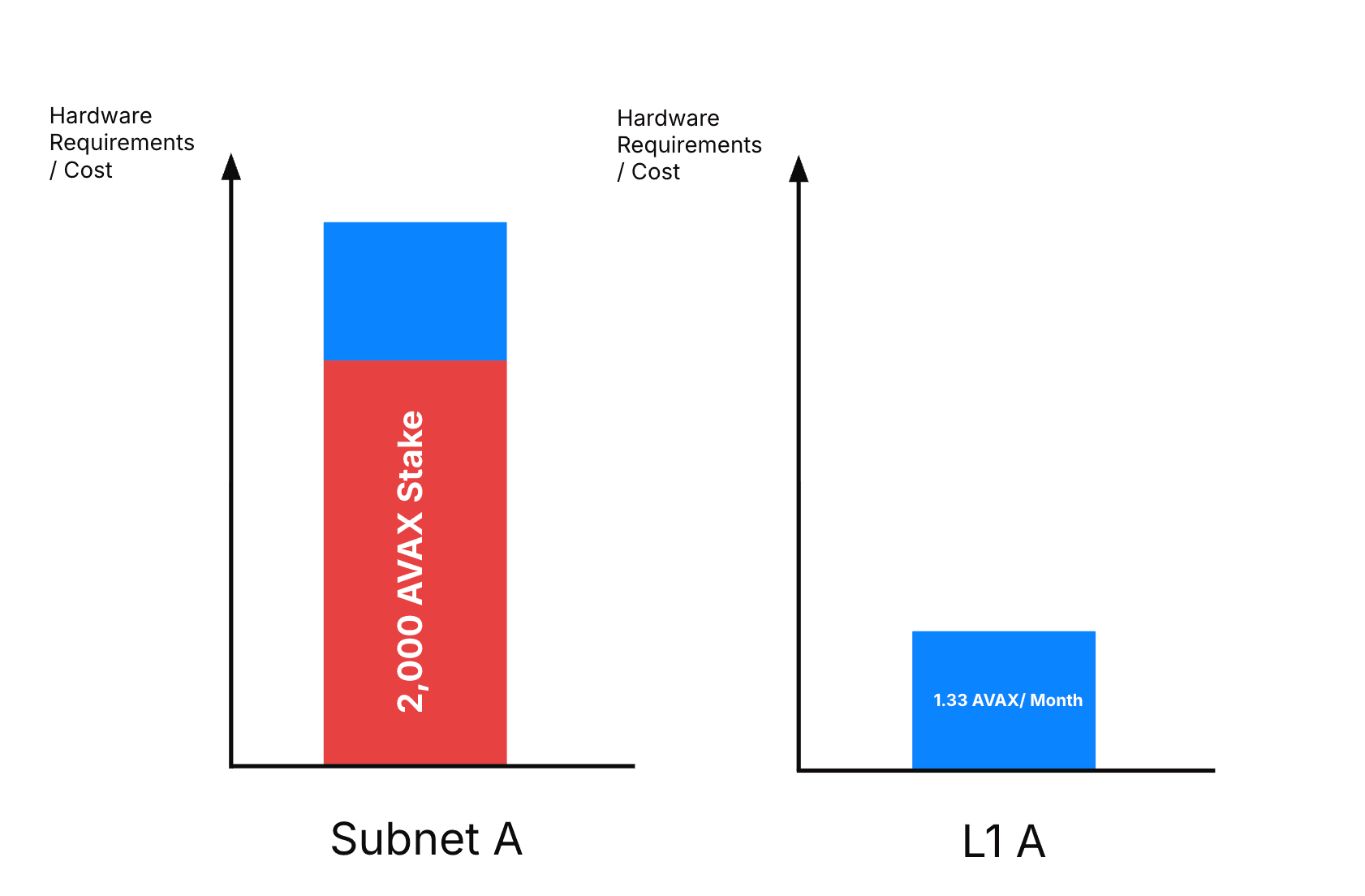Etna Upgrade (optional)
Understanding ACP77 & ACP99
This section is not necessary for understanding and running permissioned L1s but provides an insight on the improvements and evolution of Avalanche, feel free to skip if not interested.
Etna Upgrade: Making L1s More Accessible
The Etna upgrade, implemented through ACP-77, represents a fundamental shift in how Avalanche approaches network creation and validation costs.
Why Etna Was Necessary
Before Etna, launching a Subnet (now called L1) was prohibitively expensive:
- High Capital Requirements: Each validator needed to stake 2,000 AVAX (approximately $70,000 at the time)
- Minimum Validator Costs: With at least 8 validators recommended, projects needed $560,000+ just to launch
- Primary Network Burden: Validators had to sync and validate the entire Primary Network (X-Chain, P-Chain, and C-Chain), requiring substantial hardware resources
- Regulatory Barriers: Organizations that couldn't validate permissionless chains were completely blocked from participating

What Etna Changed
The upgrade introduced a continuous fee model that dramatically reduces costs:
- Reduced Running Costs: Validators now pay approximately 1.33 AVAX per month instead of staking 2,000 AVAX
- No Primary Network Validation: L1 validators only need to sync the P-Chain, significantly reducing hardware requirements
- Pay-As-You-Go: The continuous fee adjusts based on network usage, similar to cloud services
- Regulatory Flexibility: Organizations can now run L1s without validating the permissionless C-Chain
This transformation makes it feasible for startups, enterprises, and institutions to launch their own sovereign blockchains on Avalanche, opening the door to a new wave of innovation in permissioned and regulated blockchain applications.
Evolution: From ACP-77 to ACP-99
While ACP-77 revolutionized how L1s work at the protocol level, it left one important question unanswered: How should smart contracts actually implement validator management? This is where ACP-99 comes in.
The Gap ACP-77 Left
ACP-77 provided:
- Protocol-level capabilities: New P-Chain transactions and Warp message formats
- The mechanism: How L1s can send messages to update their validator sets
- The foundation: Basic rules for validator management
But it didn't specify:
- How to structure the smart contracts
- What functions and events to expose
- How to handle the complexity in a standardized way
ACP-99: The Standardization Layer
ACP-99 fills this gap by defining a standard Solidity contract specification:
Why Standardization Matters:
- Reduced Development Time: L1 creators don't need to design from scratch
- Security: One audited implementation can benefit many L1s
- Interoperability: Tools and services can work with any ACP-99 compliant L1
- Best Practices: Encodes lessons learned into a reusable standard
The Three-Layer Architecture:
- ACP99Manager: Abstract contract defining the standard interface
- ValidatorManager: Concrete implementation with owner controls
- Access Control Layer (like PoAManager): Defines who can manage validators
This progression from ACP-77 (protocol capability) to ACP-99 (standardized implementation) mirrors successful patterns in blockchain development.
Is this guide helpful?


